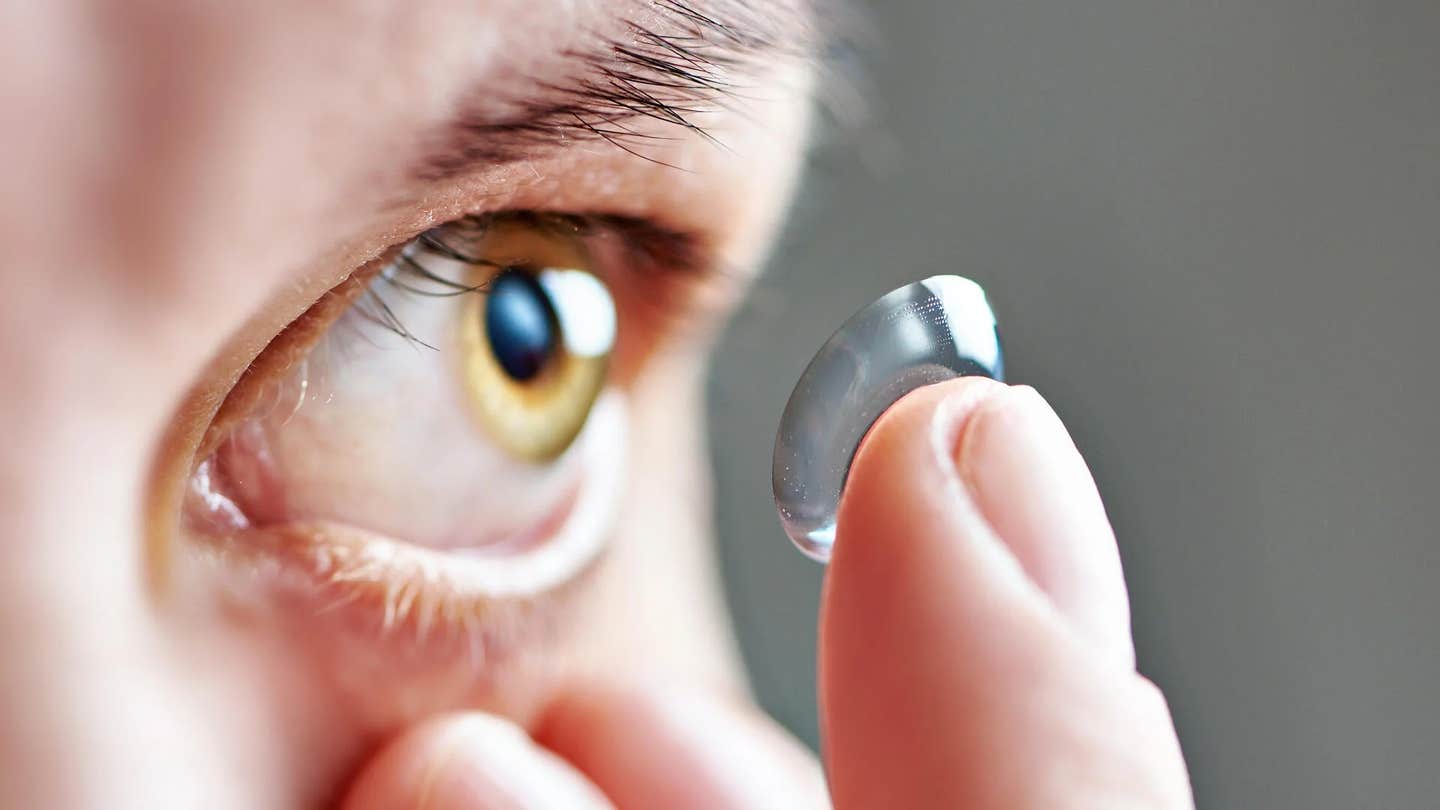Groundbreaking contact lenses release drugs as needed to heal eye injuries
Researchers have unveiled a breakthrough in eye care with the creation of a revolutionary contact lens material.

Researchers have unveiled a breakthrough in eye care with the creation of a revolutionary contact lens material. (CREDIT: Creative Commons)
University of Waterloo researchers have unveiled a breakthrough in eye care with the creation of a revolutionary contact lens material. This innovative lens serves a dual purpose: acting as a bandage for corneal wounds while also releasing medication to facilitate faster healing.
Traditionally, individuals suffering from corneal abrasions would wear a clear, oxygen-permeable bandage contact lens for about a week to ten days. These lenses are often accompanied by antibiotic eye drops to aid in the healing process. However, the effectiveness of such treatment is limited by the challenge of maintaining a sustained release of medication onto the eye.
Dr. Lyndon Jones, a professor at Waterloo’s School of Optometry & Vision Science, describes the new material as a "targeted-release drug delivery system that is responsive to the body." He emphasizes its unique ability to deliver more medication as the severity of the injury increases, potentially revolutionizing treatment protocols.
Degradation profile of (A) 20% w/v GelMA+ hydrogel in varying MMP-9 concentrations, (B) 30% w/v GelMA+ hydrogel in varying MMP-9 concentrations. (CREDIT: MDPI)
Recognizing the demand for a more effective drug-delivery system, Dr. Jones collaborated with a team of researchers and entrepreneurs from various disciplines at the University of Waterloo.
Among them were Dr. Susmita Bose, Dr. Chau-Minh Phan, and Dr. Evelyn Yim, an associate professor of chemical engineering specializing in collagen-based materials. Dr. Muhammad Rizwan and John Waylon Tse, both affiliated with Yim’s lab, completed the interdisciplinary team.
Collagen, a protein naturally present in the eye and involved in the wound healing process, served as the inspiration for the new material. However, collagen itself is too soft and weak to be suitable for a contact lens material. Dr. Yim's breakthrough involved transforming gelatin methacrylate, a derivative of collagen, into a biomaterial ten times stronger than its predecessor.
Related Stories
One of the material's key features is its sensitivity to an enzyme called matrix metalloproteinase-9 (MMP-9), which is abundant in the eye during the wound healing process.
Dr. Phan explains that by engineering the material to degrade in the presence of this enzyme, they could ensure a proportional release of medication. Thus, the severity of the wound determines the amount of medication released, with larger wounds triggering higher drug concentrations.
To demonstrate the efficacy of their creation, the team conducted human cell culture studies using bovine lactoferrin as a model wound-healing drug entrapped within the material. Remarkably, complete wound healing was observed within five days of using the novel contact lens material.
Preparation schematic for BLF-loaded GelMa+ hydrogels. (CREDIT: MDPI)
Another advantage of the material is its activation solely at eye temperatures, providing an inherent storage mechanism.
Moving forward, the researchers plan to refine the material further, exploring the incorporation of various drugs into its structure.
SEM images of (A) pre-polymerised GelMA (B) 20% w/v GelMA+ hydrogel and (C) 30% w/v GelMA+ hydrogel. (CREDIT: MDPI)
While initially designed for ocular applications, the scientists are optimistic about the broader potential of their material, particularly in treating large skin ulcers and possibly other bodily sites.
The findings detailing the team's groundbreaking work have been published in the journal Pharmaceutics, marking a significant advancement in the field of drug delivery and wound healing.
For more science news stories check out our New Innovations section at The Brighter Side of News.
Note: Materials provided above by The Brighter Side of News. Content may be edited for style and length.
Like these kind of feel good stories? Get the Brighter Side of News' newsletter.



